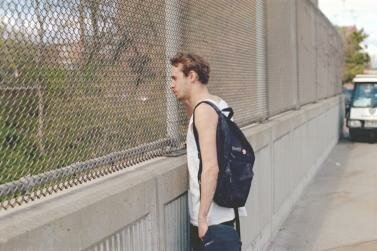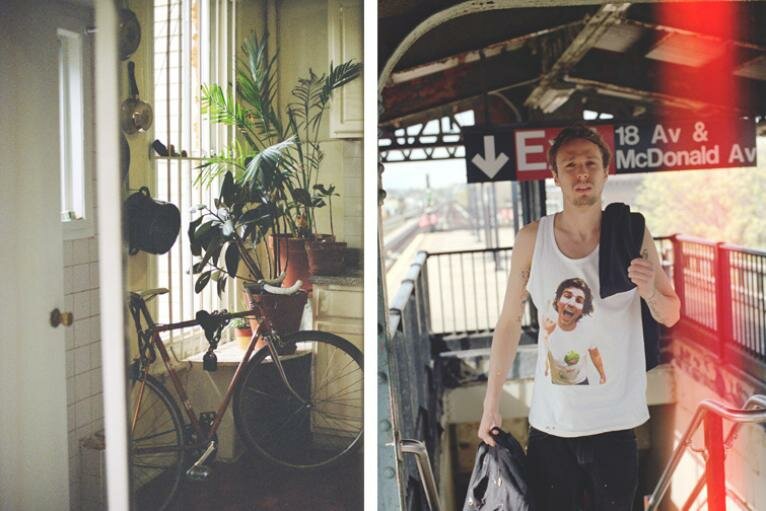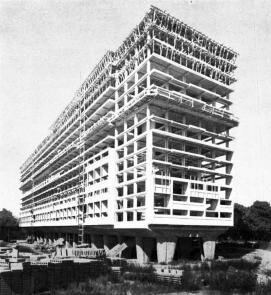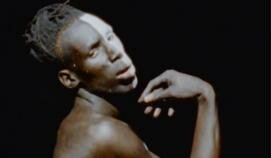- 1
- 2
- next ›
- last »
Sculptor, Evan Robarts, looks to the simplest forms in the universe in order to engage with and transform youthful memories into something tangible. In doing so, he builds a complex and captivating dialogue between science and art. Born and raised in Miami, Robarts moved to New York to study art at the Pratt Institute. He now resides in Brooklyn where he is busy creating and collaborating.
Clementine Widdowson - de Pressigny: Can you tell me about what led you to study sculpture?
Evan Robarts: My initial concentration during college was painting because I was still very taken with academic and traditional approaches towards my work. When I began to experiment with and explore different mediums, my interests gravitated towards the Abstract Expressionist movement. In 2005, I went to see Rauschenberg's exhibition at the Metropolitan Museum where he displayed his combines and something lit up. That body of work really resonated with me and was the catalyst for my decision to transition into sculpture.
CWDP: Your work deals with the big questions regarding the invisible particles of life, as well as incorporating the seemingly simple idea of nostalgia for your youthful memories. What are your ideas regarding the intersection of these concepts?
ER: It is a habit for me to break things down to their smallest components in order to understand them better. This deconstruction carries over into my creative process, and has led me to take great interest in the microcosm. It is there that you find the simplest state of reality, matter and energy in its purest form. As an artist, I want to make work that is a positive uplifting force for others to digest. My work draws upon memories and nostalgia for the ignorance and bliss associated with childhood. Through this exploration, I hope to capture and redirect this emotional state through the simplest means possible, matter and energy.
CWDP: What is it for you about sculpture, and it’s tactile relationship to creating, that allows you to explore scientific concepts that provoke you?
ER: The physical act of making art is simply a springboard to help me understand these scientific concepts. My learning process is visual and instinctual and I understand through the act of creation. The tactility of my materials helps connect me to my source inspirations, especially the more abstract concepts that are harder to grasp from a scientific or mathematical perspective.
CWDP: Mediation, the group exhibition that you curated last year, showcased the work of 24 artists whom have influenced your work. Can you tell me about these influences – what is it about these artists and their work that resonates with you?
ER: These 24 artists are my peers and in that sense they will always be an inspiration. I selected examples of their work that I felt had a strong visual foundation, were conceptually layered, and related well to the other pieces in the show. Having had the opportunity to curate several shows, I always feel that in the end I gain greater insight into my own work by observing other artists and their creative processes.
CWDP: What is inspiring or impacting on your work at the moment?
ER: I toss a lot of ideas around and my inspirations are broad. A few of the more consistent ones are microscopic images, crystal formations, and construction sites.
CWDP: Can you tell me about the mediums that you use to create your works – what makes them relevant to you?
ER: I am very open in regards to what materials I work with. In the past I have experimented with found objects, digital media, construction materials, even food products: it's all fair game. I guess it comes down to what I am trying to communicate with each particular piece. Currently, I am working with plaster, floorboards, bike frames and rainbow sprinkles but this fluctuates constantly.
CWDP: You have recently collaborated with curator Cecelia Stucker, as well as thirteen other artists, for the Transhuman project. What was the process of this project like for you?
ER: Cecelia's show was amazing for so many reasons. Before any work was even submitted, she challenged all of the artists to respond to broad, existential questions regarding the meaning of life. Where are we going, what is it worth, and how does it relate to our art. She was also asked to curate the show from California via Skype, phone, and email to coordinate logistics and organize all aspects of the show from across the country. Transhuman was about transcending everyday life and our work became a vehicle for this reflection.
CWDP: Which artists are you tracking at the moment?
ER: David Altmejd, Jeremy Everett, Andrew Sutherland, Tom Friedman.
CWDP: What’s coming up next for you?
ER: June 9th, Tappan Collective Group Art Show and Launch Party in Downtown LA.
Clementine Widdowson - de Pressigny
Photographer - Clément Pascal



end






































